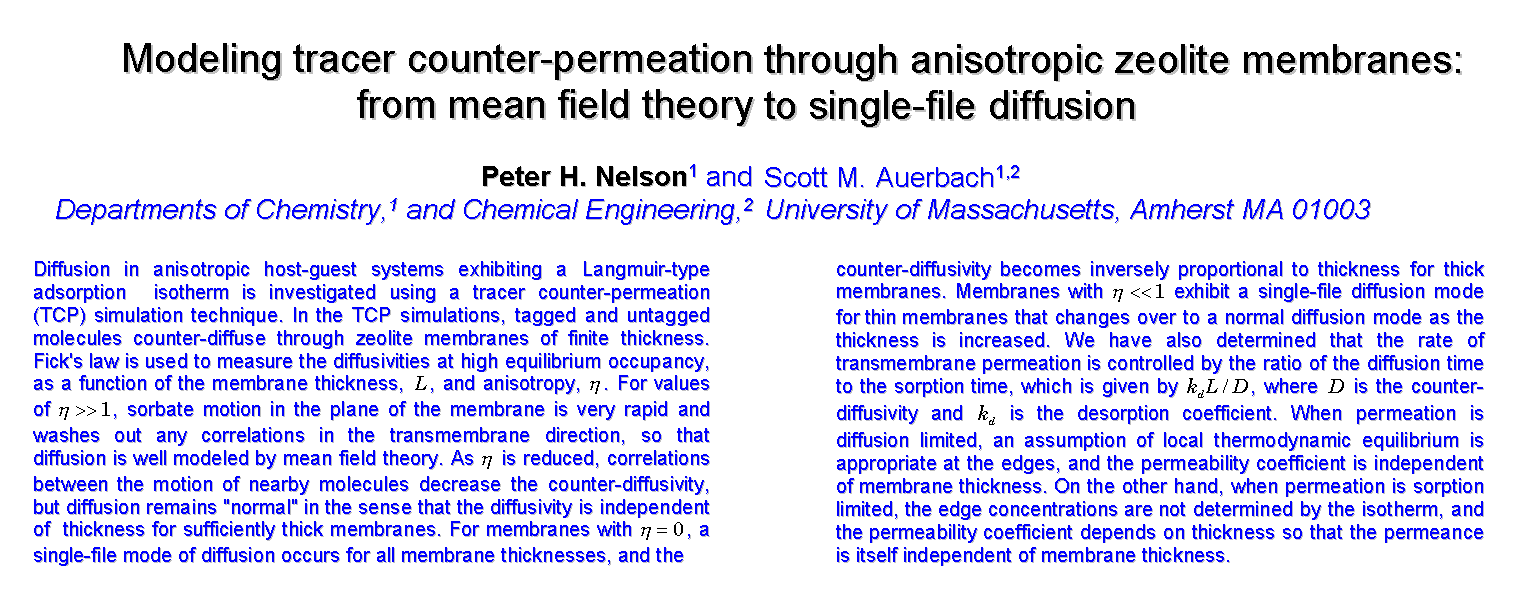
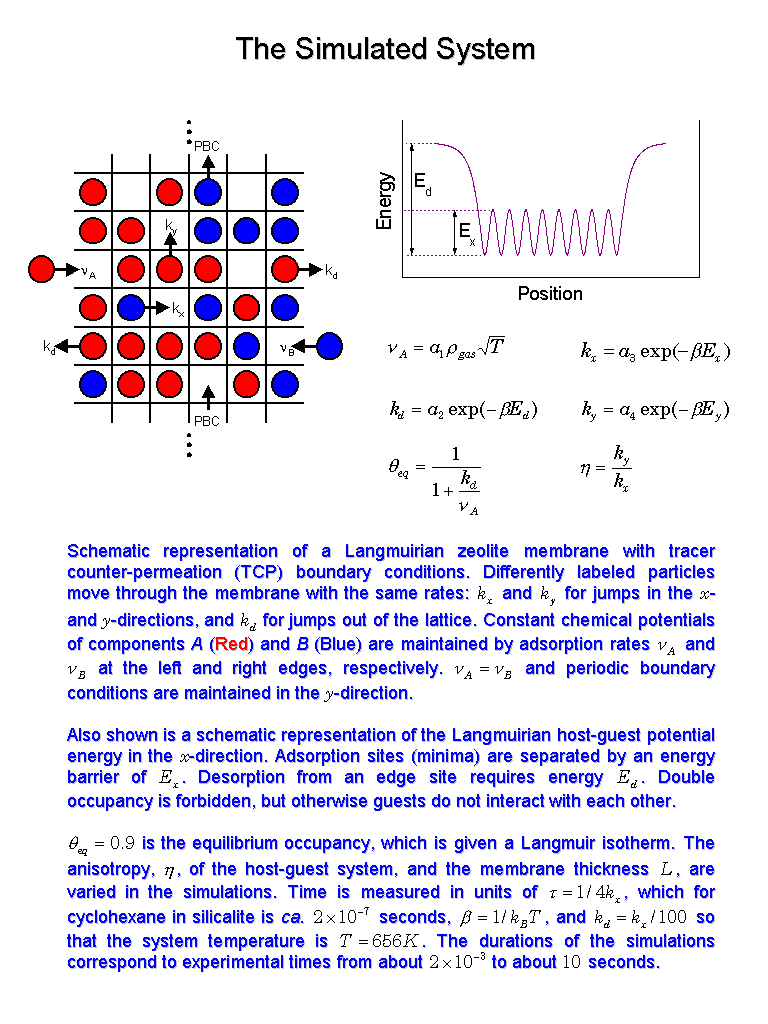
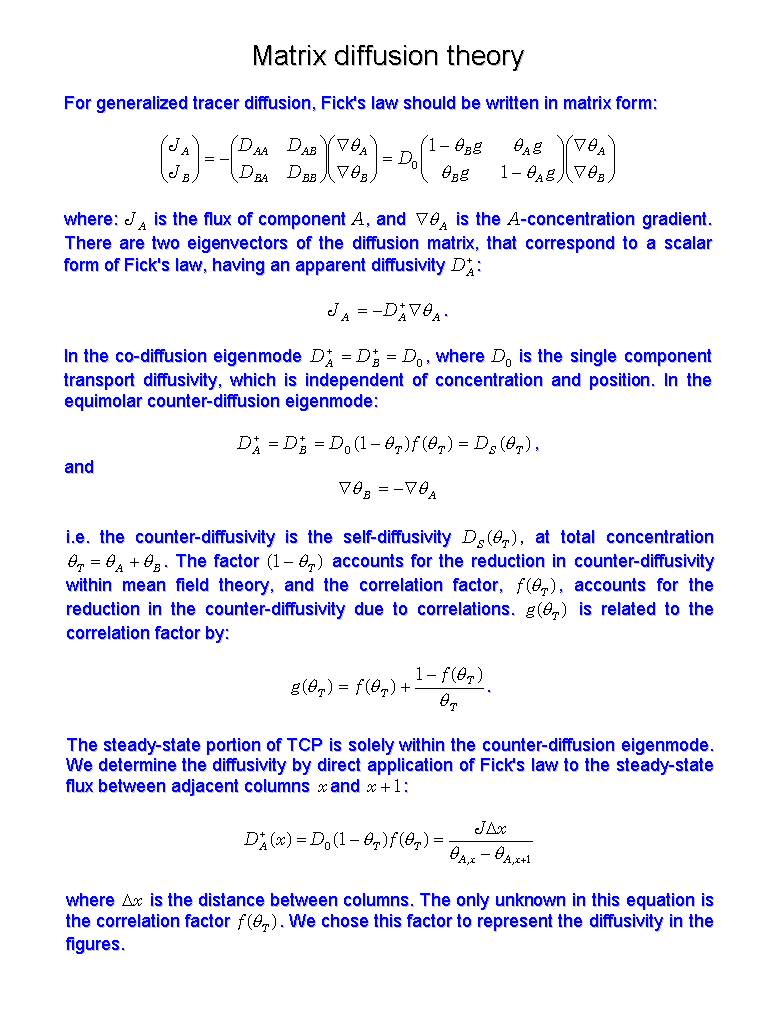
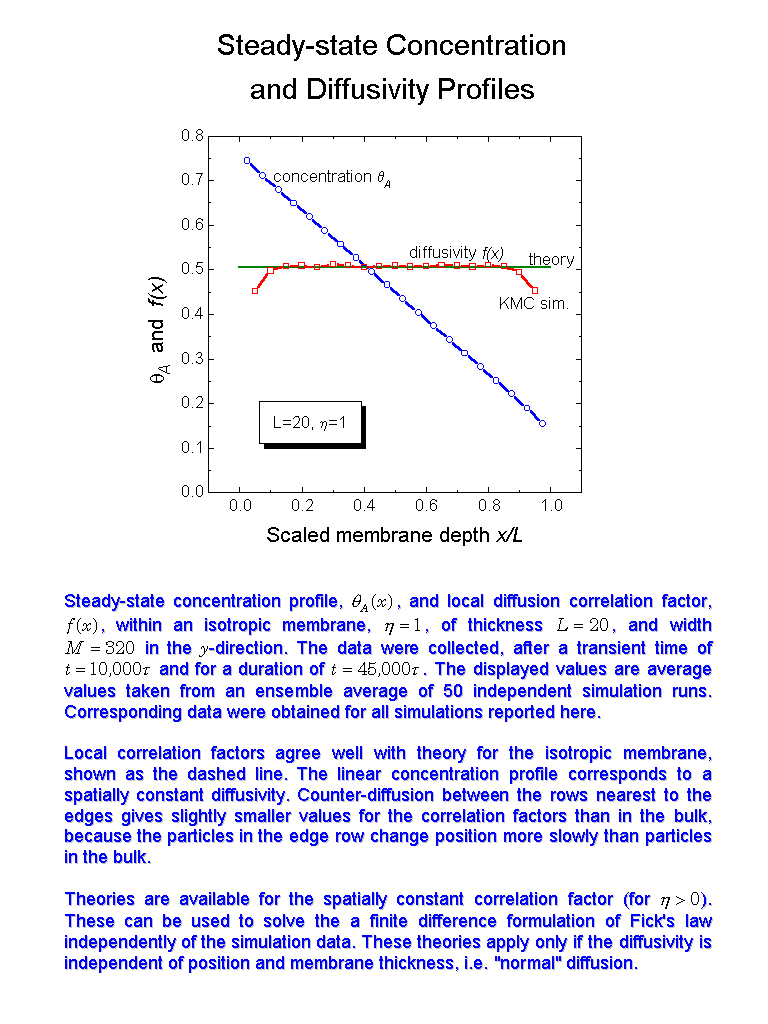
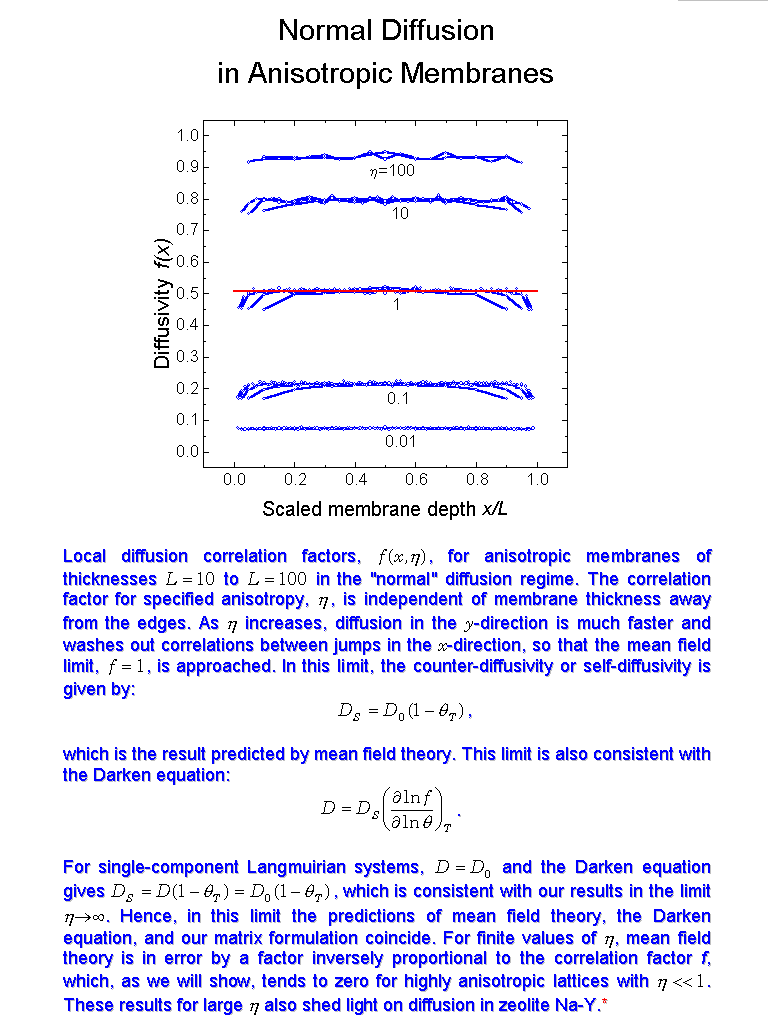
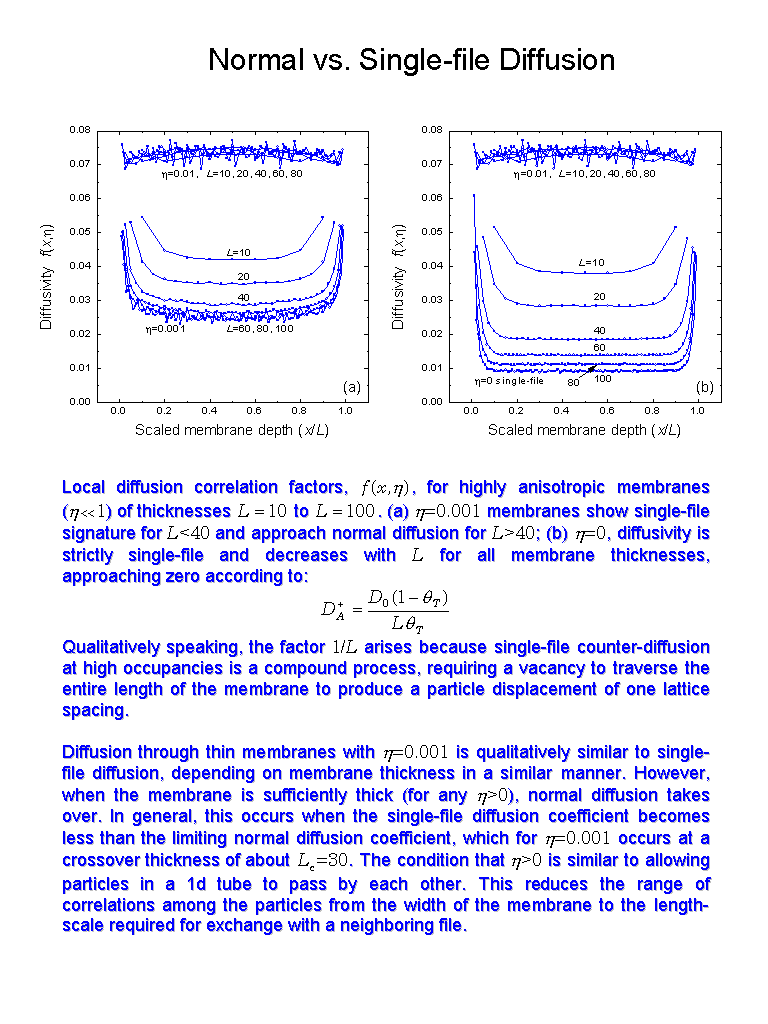
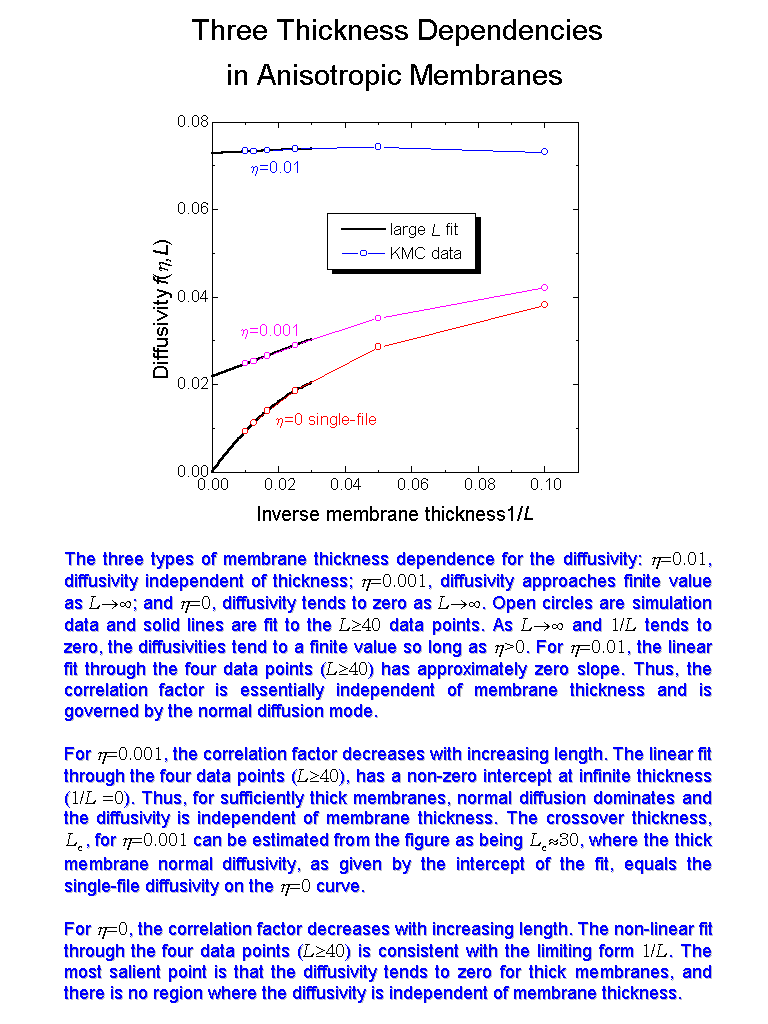
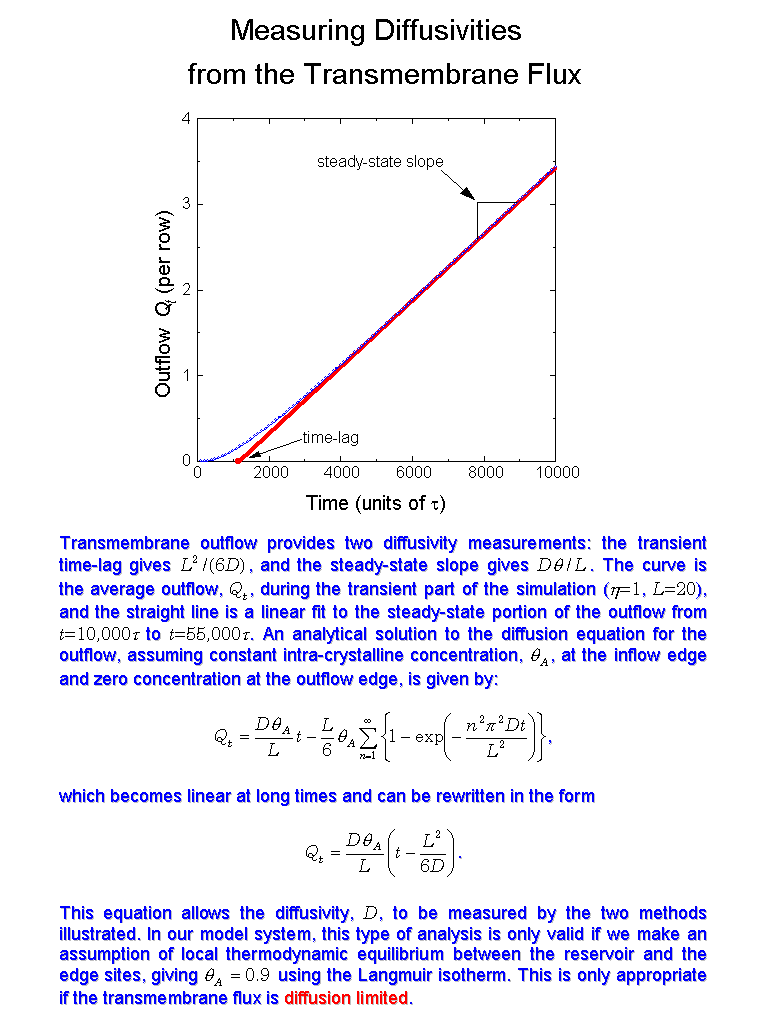
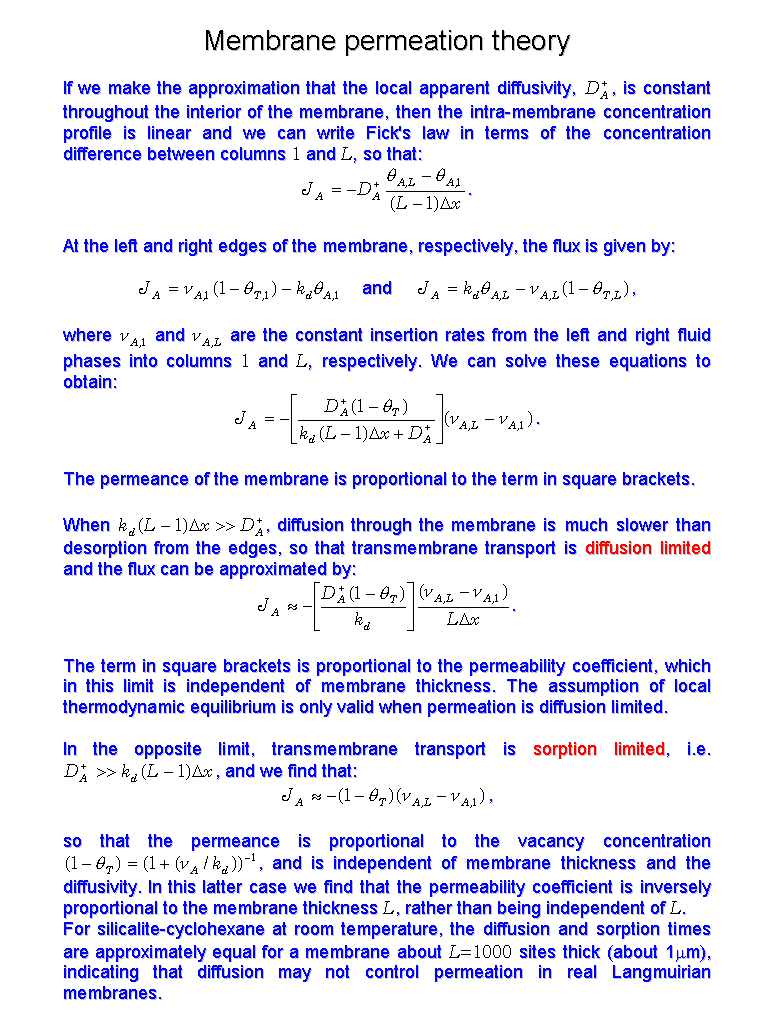
Modeling tracer counter-permeation through anisotropic zeolite membranes: from mean field theory to single-file diffusion
Peter H. Nelson1 and Scott M. Auerbach1,2
Departments of Chemistry,1 and Chemical Engineering,2 University of Massachusetts, Amherst MA 01003
ABSTRACT
Diffusion in anisotropic host-guest systems exhibiting a Langmuir-type adsorption isotherm is investigated using a tracer counter-permeation (TCP) simulation technique. In the TCP simulations, tagged and untagged molecules counter-diffuse through zeolite membranes of finite thickness. Fick's law is used to measure the diffusivities at high equilibrium occupancy, as a function of the membrane thickness, L, and anisotropy, h. For values of h>>1, sorbate motion in the plane of the membrane is very rapid and washes out any correlations in the transmembrane direction, so that diffusion is well modeled by mean field theory. As h
is reduced, correlations between the motion of nearby molecules decrease the counter-diffusivity, but diffusion remains "normal" in the sense that the diffusivity is independent of thickness for sufficiently thick membranes. For membranes with h=0, a single-file mode of diffusion occurs for all membrane thicknesses, and the counter-diffusivity becomes inversely proportional to thickness for thick membranes. Membranes with h<<1 exhibit a single-file diffusion mode for thin membranes that changes over to a normal diffusion mode as the thickness is increased. We have also determined that the rate of transmembrane permeation is controlled by the ratio of the diffusion time to the sorption time, which is given by kdL/D, where D is the counter-diffusivity and kd is the desorption coefficient. When permeation is diffusion limited, an assumption of local thermodynamic equilibrium is appropriate at the edges, and the permeability coefficient is independent of membrane thickness. On the other hand, when permeation is sorption limited, the edge concentrations are not determined by the isotherm, and the permeability coefficient depends on thickness so that the permeance is itself independent of membrane thickness.









This poster was presented at the American Chemical Society National Meeting, Boston 1998.
 Circle4.com
Circle4.com